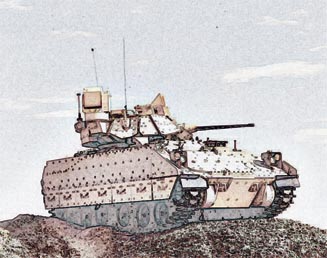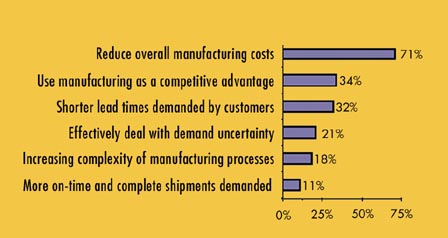 "I’m Sorry. Could You Repeat That?" "I’m Sorry. Could You Repeat That?"
Customer satisfaction with a call center is crucial to customer loyalty, positive word of mouth, and return on investment. So says the inaugural Call Center Satisfaction Index, which found that the two issues that had the biggest effect on customer satisfaction with the contact center are first-call resolution and offshoring.
"Offshoring has a negative impact on satisfaction because offshore customer service reps are less adept at solving customer problems," says Sheri Teodoru, program director at CFI Group and author of the study. "Customer service reps located outside of the U.S. are rated lower on communication skills. When communication skills are poor, customers’ issues remain unsolved in the majority of cases."
The study finds that customers who think that the contact center is located outside the United States rate their satisfaction with the call center experience 26 points lower (on the index’s 100-point scale) and are almost twice as likely to defect compared to those who think that the call center is in the U.S.
In fact, reps with poor communication skills are able to solve customer issues only 45 percent of the time, compared to 88 percent of the time when reps speak articulately. Communication skills are also problematic among some U.S.-based customer service representatives, but on average U.S.-based call centers score better than offshore call centers on representatives’ communication skills.
CFI Group uses the University of Michigan’s American Customer Satisfaction Index methodology, a standard in customer satisfaction measurement, to evaluate satisfaction with contact centers, determine key drivers of satisfaction with contact centers, and quantify the link between satisfaction and key future behaviors. ACSI scores are shown on a 100-point scale and collected with a standard model, which means that call center industry scores can be compared with the overall ACSI scores for both companies and industries, as reported by the University of Michigan (see www.theacsi.org ).
The survey found that successful issue resolution is the key force driving customers’ satisfaction and therefore their loyalty and likelihood to recommend a product or service to their friends and co-workers. Across all industries measured, almost a fifth of all callers hung up with their issue unresolved. Of those customers who didn’t have their issue resolved, 68 percent are at risk of defection (43% said that they would definitely defect, and 25% weren’t sure). That’s a substantial percentage of callers who are potential defectors based on their interaction with the call center alone.
The CFI Group Call Center Satisfaction Index surveyed customers of call centers in six industries using the ACSI’s methodology. Customer satisfaction with each industry was rated on the ACSI’s 100-point scale, and the results are as follows:
• Catalog call centers: 80
• Banking call centers: 77
• Cell phone service call centers: 69
• Cable and satellite television call centers: 68
• Insurance call centers: 68
• Personal-computer call centers: 64
Catalog and banking call centers are the standouts, based primarily on the superior customer service that their representatives provide, along with good first-call resolution. Personal-computer call centers fall far behind in customer satisfaction because nearly a quarter of callers hang up with their issue unresolved, causing customer-service reps in those centers to be rated much lower when it comes to solving problems.
"Too many companies treat call centers as cost centers rather than seeing them as an opportunity to solidify the customer relationship, resulting in increased loyalty and retention," said Teodoru. "Based on this research, any company that isn’t putting resources into making sure that the call center is delivering customer satisfaction rather than frustration is taking a huge risk with its customer asset."
The CFI Group Call Center Satisfaction Index research was conducted through online surveys with more than 900 participants. Qualified respondents contacted a call center within the last month and interacted with a customer service representative. Respondents evaluated their most recent call center experience through a 20-question survey.
An overall report and more detailed reports on all six industries surveyed are available at www.cfigroup.com/callsat.
The Pin Drops
The squeaky wheel doesn’t always get the grease. Sometimes it gets left by the side of the road.
Wireless customers who call too often to complain, fish for information about other customers, or otherwise take up the time of customer care representatives at Sprint may find themselves with a cancellation of services notice.
The third largest wireless services provider in the United States, with 53 million customers, finally got fed up with 1,000 to 1,200 of its most demanding customers and started sending out termination of services letters in late June, according to Reuters news. The cancelled accounts had their final balances waived by the company and were allowed thirty days to transfer their phone numbers to other wireless providers.
"In some cases they were calling customer care hundreds of times per month for a period of six to 12 months on the same issues, even after we felt those issues had been resolved," Sprint spokesperson Roni Singleton told Reuters, adding that the company is trimming its customer base to improve services (presumably to customers who spend less time demanding service).
Sprint declined to say how often a customer can call before being declined service, and likewise preferred not to divulge what percentage of service calls the 40,000 represent on a monthly basis. Singleton did add that some of the customers ejected from the system repeatedly asked for information about other people’s accounts.
"We’re working very hard to improve customer service," says Singleton. "That’s our No. 1 priority."
‘Co-opetition’ Is the Theme of AutoTech 2007
The only automotive industry event in which collaboration among trading partners is showcased, Automotive Industry Action Group’s AutoTech conference and exhibition returns this year with keynote and educational sessions, technical demonstrations, and an expansive exhibit floor -- all united by the theme "Co-opetition: Creating Supply Chain Value." Sponsored by the AIAG, the automotive trade conference will run Aug. 21-23, 2007, at the Rock Financial Showplace in Novi, Michigan.
For the past 25 years, AIAG has applied "co-opetition" -- a theory of creating and capturing value through cooperation with competition -- to resolve global supply chain issues via the adoption of common business practices and interoperable business systems. Now in its 20th year, AutoTech focuses on the cooperative efforts among more than 1,400 supply chain companies actively engaged in numerous AIAG initiatives.
"Globalization is investment-intensive and has triggered unprecedented collaboration among automotive original equipment manufacturers (OEM), suppliers, and service providers," says J. Scot Sharland, AIAG’s executive director. "Co-opetition is the key to our collective and future success, and it makes AutoTech and AIAG more vital and relevant today than ever before."
Conference attendees will learn how to harness concepts to achieve supply chain value from forward thinkers and industry leaders, including:
• Barry Nalebuff, Ph.D., Yale School of Management, co-author of Co-opetition (Currency, 1997)
• Laurie Harbour-Felax, founder and president of Harbour-Felax Group
• Daniel Burrus, author of Technotrends: How to Use Technology to Go Beyond Your Competition (HarperInformation, 1994).
AutoTech will also include a panel discussion and question-and-answer session with purchasing vice presidents from Chrysler Corp., Ford Motor Co., General Motors Corp., Honda of America, and Toyota Motor Manufacturing N.A.
Real-world results from supply chain collaboration as well as current projects will be featured in more than 50 sessions in 10 key subject areas. Presentations will include a changing culture for quality; global supply chain interoperability; emerging health, safety, and environmental issues; and alternative fuels.
Additionally, the exhibition area will feature solutions from more than 100 anticipated suppliers and vendors to help facilitate common business practices and systems interoperability.
For more information or to register, visit http://autotech.aiag.org.
 A Virtual Bradley Combat Vehicle A Virtual Bradley Combat Vehicle
CPU Technology Inc. and BAE Systems have been funded by the U.S. Army TACOM Life Cycle Management Command for a collaborative effort to begin the development of a SystemLab-based virtual model of BAE Systems’ Bradley Combat Systems vehicle. The virtual model will run on CPU Tech’s new SystemLab Platform Simulator and execute actual Bradley software in real time. When completed, the virtual model will enable engineering teams networked together to have complete visibility inside the electronics of the entire vehicle during real-time software execution. This is the first major application of CPU Technology’s SuperQ X3 supercomputer.
"The ability to simulate large-scale, complex platforms at real-time speeds with unrestricted visibility is game-changing," says Ed King, CPU Tech CEO. "This … has the potential to reduce the total life-cycle cost and time frame to develop new platforms or to add capabilities to existing ones by as much as 50 percent.
"The X3 contains many computer engines, but it was designed as a single brain with the ability to work in real time on the same problem," King continues. "The innovations of the X3 include solving the challenges associated with the communication traffic jams that will occur when thousands of computers all want information from each other at the same time, or getting all the computers to know in real time that it’s time to start or stop or pass results."
For more information, visit www.cputech.com and www.baesystems.com.
Statistically Speaking
The main reason manufacturers use lean principles is to reduce costs, according to a recent survey of 400 businesses by Aberdeen Group. The stratification of this graph is telling because it shows that best-in-class manufacturers are almost two times more likely to focus on reducing manufacturing costs than any other market pressure. This level of focus is impressive for an industry being pulled in so many directions; lean can range from continuous improvement to synchronizing production with demand.

Do the Math
This month’s "Do the Math" may not be an error so much as an obfuscation. Or it could be that we’re just incredibly dense.
The problem concerns a press release that Quality Digest received last month from J.D. Power and Associates, titled "Ford Motor Company Captures Most Awards in 2007 Initial Quality Study." You can read it yourself at www.jdpower.com/corporate/news/releases/pressrelease.aspx?ID=2007088.
The sentence in question reads, "Over the past 20 years, the automotive industry has improved in quality at the rate of 6 percent per year on average -- a 20-year improvement rate of more than 120 percent."
Our first thought was that, due to compounding, this couldn’t possibly be right. A 6-percent increase per year over 20 years would be much higher than 120 percent overall. But, hey, no one ever accused us of being math whizzes. So we called J.D. Power and, would you believe it, they assured us that their math was indeed correct.
So we asked some of our statistical authors (they seem to be pretty good with numbers) and they agreed with us that something wasn’t right.
So now we turn this little gem over to you. Are we and our statistical friends missing something? Are the J.D. Power numbers correct? If so, how do you crunch those numbers to arrive at their results?
Send your answers to us by clicking the feedback at the bottom of this page, and we will randomly select a winner from any answer that seems remotely plausible or even implausible. Or maybe we’ll pick the one that embarrasses us the most.
Send us an example of any mathssacre you spot in newspapers or magazines, or on the radio or television. If we use your entry, you get a prize.
Six Sigma Fun and Games
MoreSteam.com, which specializes in lean Six Sigma instructional technology, has launched a new 3-D virtual campus in Second Life to bring a new dimension to lean Six Sigma learning and collaboration. Second Life (www.secondlife.com) is a 3-D virtual world developed by Linden Labs, with content entirely built and owned by its residents. Since opening to the public in 2003, it has become "inhabited" by more than 8 million people.
The 3-D learning lab allows teams to meet within the virtual world to conduct live virtual experi ments. Team members attend More-Steam’s virtual campus by creating an avatar to represent their physical presence. The campus learning lab incorporates an "avapult," a catapult used to hurl a designated team member at a sticky wall target while attempting to avoid hazards such as flames, thorn bushes, alligators, and giant dragonflies.
Participants in the virtual lab communicate via text messaging or conference calls. The virtual lab provides an opportunity to learn by doing -- to practice design of experiments in a simulated environment, determine which inputs to the avapult are significant, and what the optimal settings are. This process represents the central Y = f(X) calculation found in lean Six Sigma projects.
Second Life may add a fun element to learning, but practicality is the bottom line of a virtual campus. The lean Six Sigma Black Belt course is about 145 hours long, not including project work, and includes the complete ASQ body of knowledge.
"The primary advantages are cost and flexibility," says Bill Hathaway, president of MoreSteam.com. "In some cases, there is no practical way to add a physical workshop to an e-learning course, but we believe that people benefit from interaction. Ultimately, if we are teaching lean Six Sigma, we need to use lean Six Sigma to improve our training delivery, and this is an effort to do that -- to learn how technology can be employed to accelerate learning. If we can have some fun along the way, then we can engage people at a deeper level."
For more information, visit www.moresteam.com/university/secondlife.cfm.
|